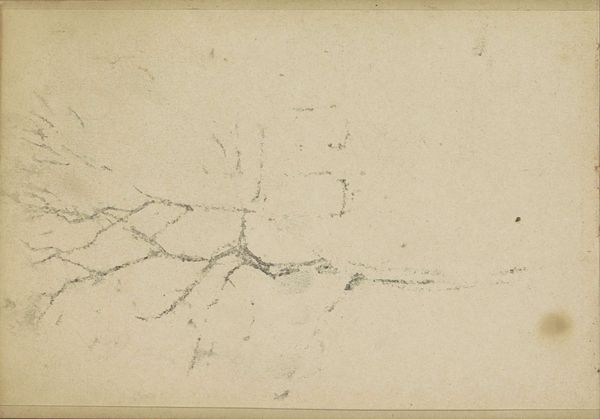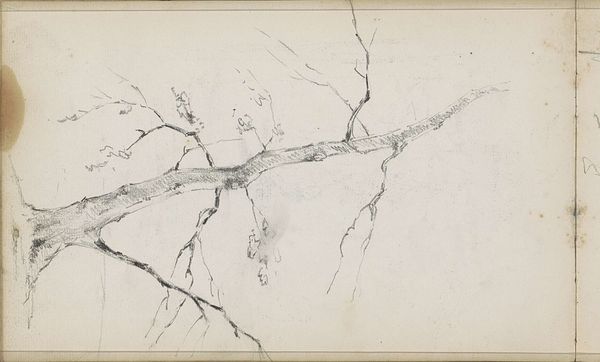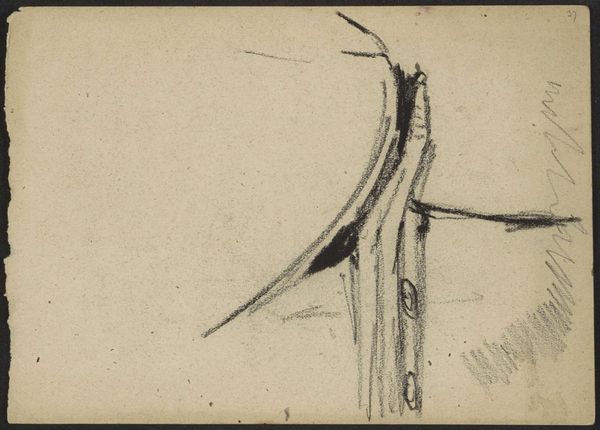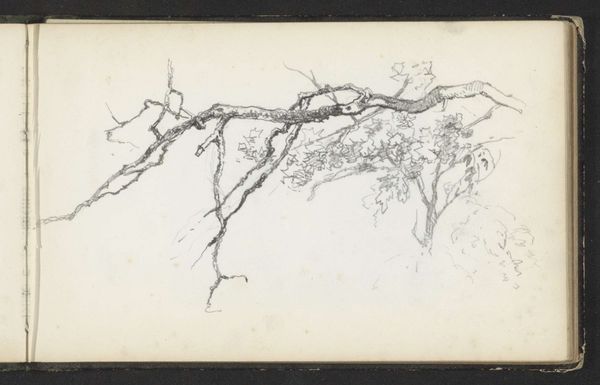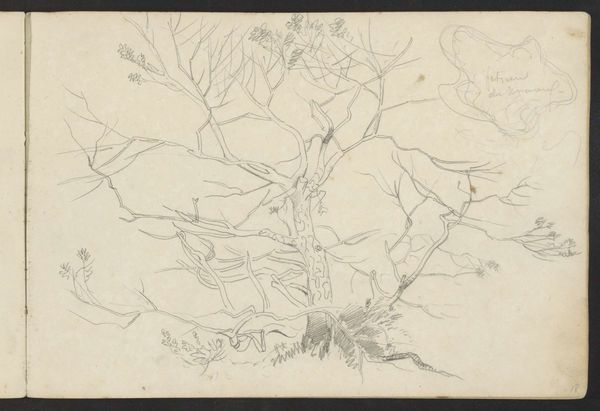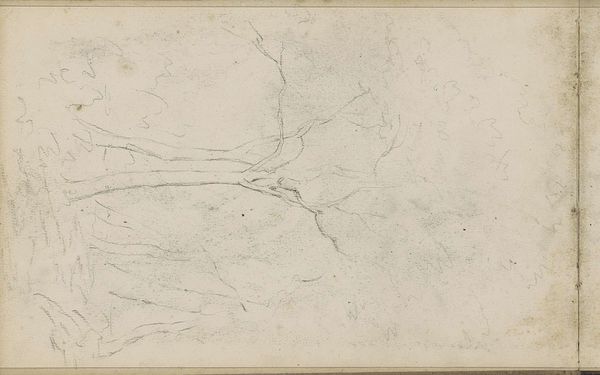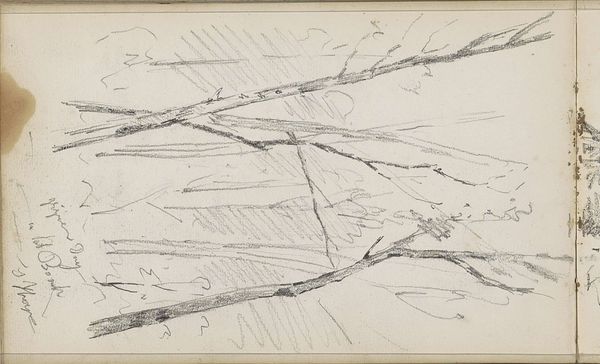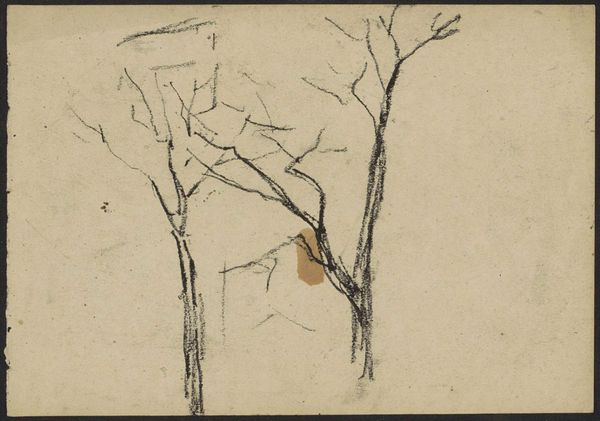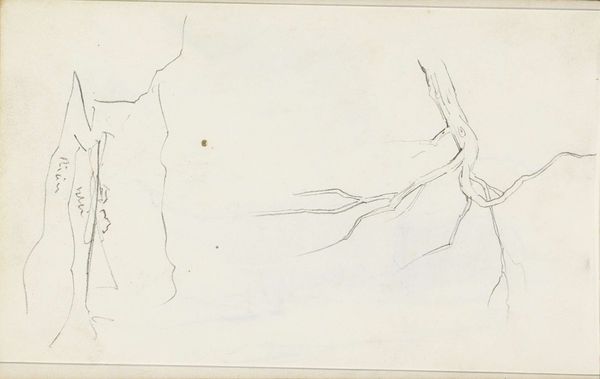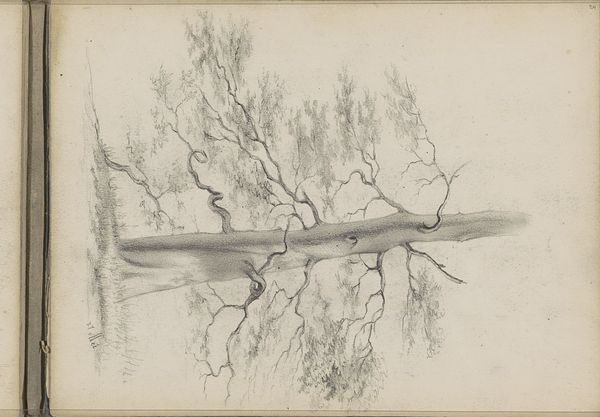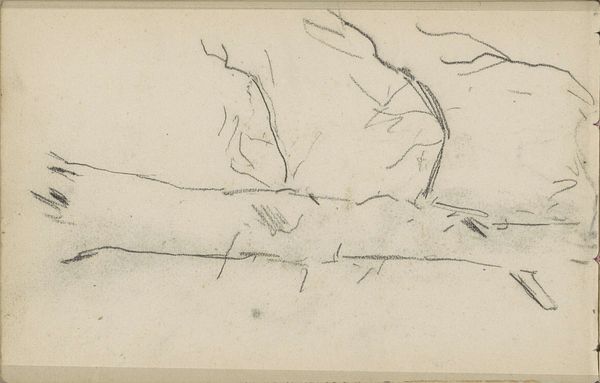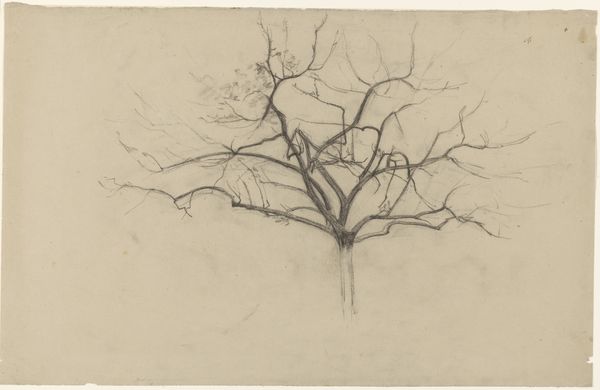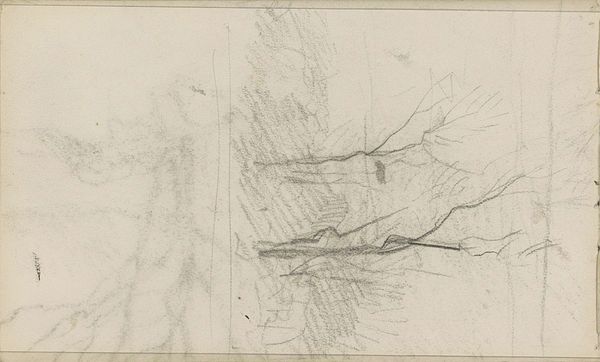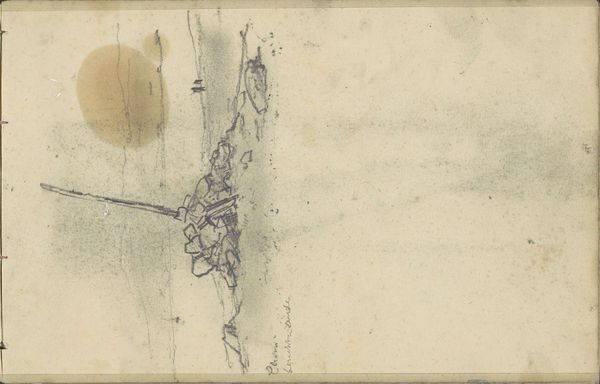
#
tree
#
amateur sketch
#
toned paper
#
pen sketch
#
pencil sketch
#
incomplete sketchy
#
personal sketchbook
#
ink drawing experimentation
#
pen-ink sketch
#
sketchbook drawing
#
sketchbook art
Dimensions: height 200 mm, width 140 mm
Copyright: Rijks Museum: Open Domain
Curator: My first thought? Stark. It's so raw and direct. Editor: Indeed. What we’re viewing is "Boom," a pen and pencil sketch by Willem Witsen, likely made somewhere between 1870 and 1923. You can find it here at the Rijksmuseum. The piece, seemingly a study of a tree branch, certainly gives us insight into his process. Curator: It's really just the essence of a tree, reduced to these quick, gestural marks on toned paper. I wonder if the availability of materials influenced this directness. Was he economizing his tools, his paper? Or was this level of “undone” sketch more acceptable for artistic consumption at the time? Editor: The late 19th century witnessed a burgeoning art market, and with it, a growing appreciation for sketches as collectible items, demonstrating an artist's skill in its purest form. Collectors enjoyed glimpses into artistic practice previously considered too informal for public view. And keep in mind the institutional changes—rise of art academies, shifting patronage… All contributing factors. Curator: It really does feel like peeking into his personal sketchbook, seeing him experiment with mark-making. I am fascinated by what an incomplete, sketchy rendering like this communicates, the labor involved or omitted. The toned paper, I'd guess, functioned practically to provide a mid-tone and accelerate rendering depth without requiring intense detail in the darker marks? Editor: Possibly. Also, consider Witsen’s position in Dutch society and the artistic circles he navigated. He had access to certain papers and materials—and definitely also had to navigate the established tastes within the art world of the era to find patrons and recognition. Curator: What interests me the most is what it tells us about his technical understanding, how economically he could convey the sense of that weighty branch, without overworking it. It pushes back against traditional definitions of 'finished'. Editor: And in doing so, it offers a compelling commentary on those very definitions, demonstrating how shifting tastes and changing social structures elevate the seemingly ephemeral sketch to a valued work of art. Curator: Definitely leaves me wanting to know more about the paper itself – its texture and how that played a part in the look of the line. Editor: It prompts us to look closer at what art institutions historically defined as ‘art’ and how artists challenge or manipulate those boundaries.
Comments
No comments
Be the first to comment and join the conversation on the ultimate creative platform.
